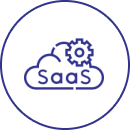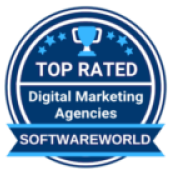Digital Solutions Intuitive Experiences





We Are Your Digital Transformation Partner – Strategize, Execute, Deliver!
WHAT WE’RE OFFERING
Services we're providing to our customers

Search Engine Optimization
Website structure optimization coupled with strategized and well-planned marketing for business growth

Website Development Services

Mobile App Development
Intuitive, innovating and customer engaging mobile apps for all domains,
industries and major OS

Pay Per Click
Sponsored marketing solution with
keyword-research-based, low-cost
bidding process to drive results

Online Reputation Management
We influence and control your
business reputation online with a positive, credible image makeover.

UI & UX Design
We establish a clear design process,
enhancing digital product’s user
interface with influential visual aspects






















Constrained
EXPERTISE – QUALITY – KNOWLEDGE

Our Search Engine Optimization Services

SEO Services
Your trusted SEO agency, we deliver creative, result-oriented, tailored solutions. Our team of certified and experienced SEO professionals utilize advanced tools and technologies, follow the latest trends to align your website with search engine algorithms, and boost your online visibility and search result ranking.

Ecommerce SEO Services
Our sole focus is on developing your online store into a trusted brand that delivers exceptional shopping experience to customers. Tailoring our SEO practices to your industry and targeted market, we optimize your website structure, optimize product pages, and more, to increase brand visibility and attract potential customers.

Reseller SEO Services
Looking to outsource your SEO projects to a reliable, experienced, and professional SEO agency in India? We provide complete reseller SEO services, helping to take care of your clients like our own. We provide dedicated and expert SEO services to our reseller partners.

Small Business SEO Services
To help your small business make a positive impact in the defined regional boundaries, we implement SEO strategies that align with your target customer behavior. We not only help you outshine your local competitors, but also stand against large enterprises competently, with improved online visibility, inbound traffic, and higher conversions.

Local SEO Services
Taking your brick-and-mortar business online? Want to grow your online businesses’ presence and sales in your neighborhood? From optimizing Google My Business (GMB), and your brand positioning on Google Maps, to optimizing for location-based searches, and improving brand credibility, we help drive online sales and foot traffic to your business.

Full-time SEO Services
Looking for managed and dedicated SEO services? Our full-time SEO services are offered by assigning a complete team of tech experts, marketers, and project managers who work exclusively for your project. They handle the entire aspects of your site’s optimization, with regular monitoring and analytics assessment. With a dedicated project manager, and round the clock assistance, we ensure consistent growth in your brand’s online presence.

Link Outreach Services
Earning quality backlinks from high-authority and notable websites and online sources is a big positive factor in improving ranking in Google search results. Our link-building approach includes quality, informative content creation, and guest blogging on top websites relevant to your niches, to earn backlinks that help improve brand credibility, online visibility, referral traffic, and conversions.

Penalty Recovery
To index and rank on Google search results you need to follow its guidelines fully. Any spam or illegal activity can get your site penalized by Google. If your site has suffered such a penalty by any of its algorithm updates, we will help you recover from the penalization, enabling you to recover your lost brand credibility and Google search result rankings.

Online Reputation Management
Online reputation of your brand can make or break your business potential. Negative opinions can pull down your SERP ranking as well as inbound traffic through organic, referral as well as direct sources. Our dedicated and expert online reputation management (ORM) focuses on improving a positive image of your brand (business and individuals), garnering more positive views and referrals, while improving your search result ranking.
Social Media Management Services

Social Media Optimization (SMO)
We help create your brand’s position on different social networks right from scratch. From account set-up to optimizing brand information, creating user-targeted posts, frequent updates, and engagement with visitors, our dedicated SMO service helps manage your social presence fully.

Social Media Marketing (SMM)
We help you leverage the power of platforms like Facebook, Instagram, LinkedIn, and more, by running result-oriented targeted advertising campaigns. Our sponsored ad managers will create tailored content ads aligning with your business goals, helping you gain maximum reach, traffic, and conversion with the least possible expenses.

Influencer Marketing
With a strong presence in the digital industry and a vast network in the social media field, we will help you harness the full power of influencer marketing. We will help boost your brand’s position and impact with a tailored approach to industry influencers.

Content Production
To thrive and build your brand positioning on different social media networks, you need specific strategies for each one of those. Our social media experts and content developers are aware of how to create engaging and impactful content for different social platforms that leave a lasting impression on the targeted audience.
Our Development Services
Your Web presence is the first interaction between you and your target audience. The more impactful and meaningful is, the better you can engage them and turn them from visitors to customers. We take care of your entire web design, development, ecommerce, and mobile development requirements, focused on creating intuitive solutions that highlight your unique propositions.

Web Development Services
Whether you want to take your offline business online, modify your present web presence, or leverage more web capabilities for business growth, we provide end-to-end web development solutions. WordPress, Python, PHP, HTML5, and more, we develop robust, functional, secured, and high-performance websites and web apps.

Web Design Services
Your website and web applications’ look and feel should be reflective of your brand identity. Our skilled web designers know how to turn your vision into reality, creating web designs that are unique, appealing, seamless, and easy to navigate.

UI/UX Design
The way your website interacts with the user defines how well you can turn them from a visitor to a customer. We focus on fast load time, quick and easy navigation, clear design elements, and ease of finding information for improving the User Interface (UI) and User Experience) of your site.

Mobile Development Services
We use the latest technologies, agile methods, and a full spectrum of tech stacks to create advanced, high-performing mobile applications across different Operating Systems (OS). We create native as well as hybrid applications for large enterprises to small businesses, for any business type and concept.

Ecommerce Development Services
eCommerce is growing at a rapid pace. Our years of expertise and experience and a team of skilled developers allow us to help online sellers improve their bottom line and create a marketplace that improves their buyer outreach, engagement, and sales.

SAAS Development Services
We provide complete cloud-based software development services, for businesses as well as users. Whatever your precise business and functional needs are, we handle the complete lifecycle development process, from conceptualization, to design & development, testing & deployment, along with maintenance support.
Our Approach – Cohesive, Collaborative, Result-Driven
Why pick us as your digital marketing, SEO, web, app, and software development services provider? Several reasons make us, the leading SEO company in India and a top web and mobile development agency, your trusted choice:
- Over 10 years of industry experience, with a proven track record of successful completion of over a thousand projects.
- Exceptional team of skilled, certified designers, developers, and marketers who keep evolving their knowledge with time.
- We always work with a philosophy of ‘no-one-solution-fits-all’, meaning we create custom-tailored and bespoke solutions for each client.
- Continuous learning and upskilling help us updated with the latest tools and technologies and keep ahead of market trends.
- Use of advanced technologies, domain expertise, and agile methodologies.
- Over 99% of client retention rate that underlines our commitment to excellence and timely delivery.
- We use only time-tested and tried techniques that have formed the base of our success over the years.
- We don’t follow patterns of what others are doing; instead, we set our methods based on our experience and skills, setting a benchmark for others to follow.
Free Assistance
Have a Project to Discuss?

A corporate enterprise, a manufacturer, a consulting service, a learning hub? Whatever field you are in, we deliver innovative
digital solutions across spectrums for all through complex engineering, experience design and responsive transformation.
With a proven track record in digital product development, web & mobile solutions and technology consulting, we design, develop, deploy and drive actionable results.
We work with all industry types and size businesses encompassing small start-ups to large corporates catering different complexity and culture:
- Start-ups or Venture-Backed
- e-Commerce
- Education
- Hospitality
- Healthcare
- and more...
Customer Testimonials

Discover authentic stories of customer success, reflecting our commitment to delivering exceptional service.
Their communication skills were impressive.
Thanks to eSearch Logix Technologies' work, the client's web traffic increased by 25%. Their social media engagement also rose by 30%. The team delivered the project on time and met the timeline requirements. Their communication skills were also commendable. Overall, the engagement was successful.

They're very fast and have good quality.
We have been working with Logix for 6 months. Since December (starting project) our visitor and turnover have been increasing. We plus about 10-15% every month. That's why we gave them more work for our other case. They also do our Amazon account services. They built a great store for our company on Amazon. We are very satisfied with this company and highly recommend it.

The good communication, fast turnaround, and reasonable pricing were impressive.
eSearch Logix Technologies Pvt. Ltd. provided significant help to the client coordinating with them seamlessly using Basecamp. The communication, turnaround, and pricing of their work stood out the most during the engagement.

Their knowledge, teamwork, and coordination within and with the clients impressed us.
Their knowledge, teamwork, and coordination within and with the clients impressed us. And how much effectiveness and innovation they bring to the table. As we projected, our fair share in market has grown 1.5 times, within the second month of seo work, and we are being appreciated by our customer base.

The communication was clear and every project phase was handled in a timely manner
More people are interested in coaching services. eSearch Logix Technologies Pvt. Ltd handled the project skillfully. Their team was communicative and knowledgeable. They developed an effective marketing solution quickly.

Everything goes smoothly, in a very clear way.
“ eSearch Logix Technologies has received positive acclaim for their efforts. Their professionalism, knowledge, and effectiveness are highly commendable. They demonstrate expertise in handling various claims and resolving Amazon issues, working smoothly and efficiently to achieve positive outcomes.

Highly recommended!
eSearch Logix is the best digital marketing company. They are expertise in ranking website and creating brand awareness in online media. I’m fully satisfied with their work and how open & skilled they are with what they do. They are professional and always update me so I know exactly what they’re doing.

They understood our demographic and created the platform.
eSearch Logix Technologies Pvt. Ltd. generated a mobile app that secured increasing downloads and affirmations from its users. The team maximized their use of effective communication channels to reach out to their client and provide updates. Their promptness and responsiveness stood out as well.

After launching our website, we saw a 50% increase in traffic
The website resulted in a 50% increase in traffic and 100% increase in leads, meeting the internal team’s expectations. A communicative partner, eSearch Logix Technologies Pvt. Ltd. gave daily project progress updates and a heads up if there would be any issues.

They have the ability to adhere to changes along the way.
The work of eSearch Logix was effective because it successfully exposed the client to leads and potential clients. The team met all deadlines and maintained consistent communication throughout the engagement. Their flexibility, speed of delivery, and transparency were stellar.

From start to finish, their project management has been very commendable.
eSearch Logix Technologies Pvt. Ltd. completed the website within the given timeframe. The project management was very efficiently handled. Their team was communicative, customer-focused, and highly professional.



















